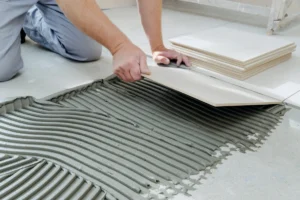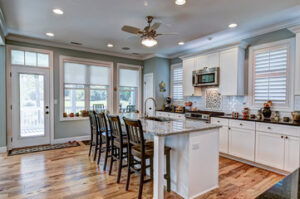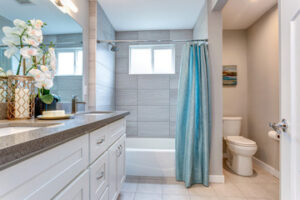When a plumbing emergency occurs, it’s important to know who to call right away. Researching plumbers can seem time-consuming, especially in a crisis, but it is worth it to find a plumber you trust. Look for online reviews and testimonials.

Some plumbing problems are more serious than others. Knowing when to call an emergency plumber can help you save money and avoid costly repairs. Contact Plumbers Spring TX for professional expertise.
When drains clog, it’s an emergency because it can prevent water from flowing out of your sinks, bathtubs and toilets. Clogs usually occur because hair, soap scum, grease and other debris stick to the inside of your pipes. They may also be caused by tree roots or by a broken pipe.
Clogged drains are often accompanied by foul smells or water that backs up from your toilet, shower or tub. If this occurs, call an emergency plumber right away. In some cases, a clogged drain can cause your toilet or sink to overflow, which can result in water damage to your counters, floors and walls.
Most clogs require the help of an emergency plumber to remove them. However, there are a few things you can try before calling a professional. For example, if the clog is caused by grease, pouring hot water down the drain may break up the blockage. Pouring boiling water down the drain several times, letting it cool in between, may also help to dislodge the clog.
You should also consider using a plumbing snake or auger if your clog is deep and doesn’t respond to other methods. These tools can break up or dislodge a blocked line without damaging your pipes and are available at most hardware stores.
You can help reduce the risk of clogs by keeping food scraps, grease, fats and oils out of your kitchen drain lines. It’s also helpful to use a garbage disposal that is regularly maintained. It’s a good idea to use food strainers or drain catchers to collect large particles before they enter your drains. You should also avoid flushing anything other than toilet paper down the drain.
Burst Pipes
A pipe that bursts can cause serious water damage to your home. Not only will it lead to a messy cleanup, but it could also result in costly repairs and mold growth. This is why it’s important to know the warning signs and act quickly. Keep an eye out for dripping or gushing water, discolored water, and unexplained increases in your water bill. If you notice any of these symptoms, call a plumber right away.
The most common reason for a pipe to burst is freezing. In cold climates, it’s very easy for pipes to freeze and expand. This is especially true if they’re exposed to extreme cold or aren’t properly insulated. Pipes that run through unconditioned spaces like attics, crawl spaces, or basements are particularly susceptible to freezing, as are those that travel along exterior walls.
If you suspect a pipe has frozen, turn off the water supply to that area and try to thaw it out before calling an emergency plumber. It’s also a good idea to move any furniture or belongings away from the area of the leak, as this will help prevent further damage and make it easier for your plumber to access the problem area.
If you can’t find the source of the leak, look for puddles of water around your home. Large puddles in several areas typically indicate that the burst pipe has caused significant flooding and will continue to flood until the water supply is turned off. If possible, plug the leak with rags or towels to stop the flow and reduce water damage. You should also use a wet/dry vacuum or submersible pump to remove any standing water from your home.
Sewage Backup
Sewage backups are not just a disgusting mess; they also pose a serious health hazard. Raw sewage contains dangerous bacteria that can make you and your family very sick. It can also contaminate your household water, causing your plumbing fixtures and appliances to stop working. To avoid this catastrophe, it is important to call an emergency plumber right away if you suspect a sewage backup.
The most common cause of a sewage backup is a blocked sewer line. This can happen when people flush items down the toilet that are too large or shouldn’t be in the pipes, like diapers, sanitary products, and grease. Another common cause of a sewer backup is when the weather is too hot and rainwater backs up into home sewer lines.
If you have a sewage backup, shut off all water in your house and move any furniture or appliances away from the affected area. It is also a good idea to wear rubber gloves and masks when cleaning up the mess. If the sewage is flowing near electrical outlets, you should turn off the electricity to prevent electrocuting yourself. You may also want to evacuate the affected area and use fans, dehumidifiers, and window air conditioners to help speed up the drying process.
If you think your sewer line has backed up, contact an emergency plumber immediately. A reputable plumber will be able to quickly diagnose the problem and determine the best solution. Before choosing a plumber, check their reviews and responses to complaints online. A high number of positive reviews and a professional attitude are good signs that the plumber is legitimate. To find out more about the plumbing services offered by Kowalski, click here.
Gas Leaks
Gas leaks are among the most dangerous plumbing emergencies, as they can cause explosions and poison your home with carbon monoxide. A few simple steps can help you determine if you have a gas leak. If you smell rotten eggs or other foul odors, see dead plants inside and outside your house, or hear a hissing sound near your gas lines, contact an emergency plumber right away.
Before a plumber arrives, turn off your gas supply at the main valve and move everyone in the house to a safe location. A licensed plumber can then shut off the gas and repair the leak.
In addition to the sulphur-like odor of natural gas, you might also notice a white cloud or bubbles in standing water, hear a hissing noise, or notice that your plants and grass are wilting and dying. Some people have even experienced nausea and fatigue, which can be a sign of carbon monoxide poisoning. In extreme cases, this can lead to unconsciousness and death.
Leaving a gas leak unattended can be very hazardous, especially if there are children or elderly people living in the house. To avoid such a scenario, it is important to call an emergency plumber as soon as you notice any signs of a leak.
An emergency plumber will arrive faster than a standard plumber since they are already on their way to your house. They will have the necessary tools and equipment to fix your leak quickly, so you can get back to your regular schedule. In addition, they will take extra care to ensure your safety while they are working on a hazardous problem like a gas leak.
Water Leaks
An emergency plumber can fix a variety of plumbing issues, from burst pipes to clogged drains. However, it’s important to know when to call for help. This helps prevent further damage to your home and saves you money on repair costs. To find the right emergency plumber, you should consider their credentials, experience, and pricing structure.
An experienced and qualified emergency plumber will have a good understanding of the local plumbing codes and regulations. They’ll be able to work efficiently and quickly to resolve the problem and leave your home in good condition. An emergency plumber will also be able to provide you with advice on how to avoid future problems.
A water leak can cause significant damage to your property if left untreated. A simple drip from a faucet or a toilet can become an expensive flooding disaster if it’s not fixed quickly. An emergency plumber will have the tools and equipment needed to stop a water leak in its tracks and minimize the amount of damage it causes.
To determine if you have a water leak, turn off all of the faucets and showers in your home. Then, use a leak indicator or check your water meter to see if the reading has changed. If the reading has changed, you probably have a water leak somewhere in your home. If the leak is coming from a faucet or shower, it’s probably an easy fix for your emergency plumber.
If the leak is coming from a pipe in your yard, it may be more difficult to locate and fix. In this case, it’s best to shut off the main water valve in your home before calling for help. This can be found in the basement or garage directly behind your home’s water meter, or outside below any outdoor faucets.



